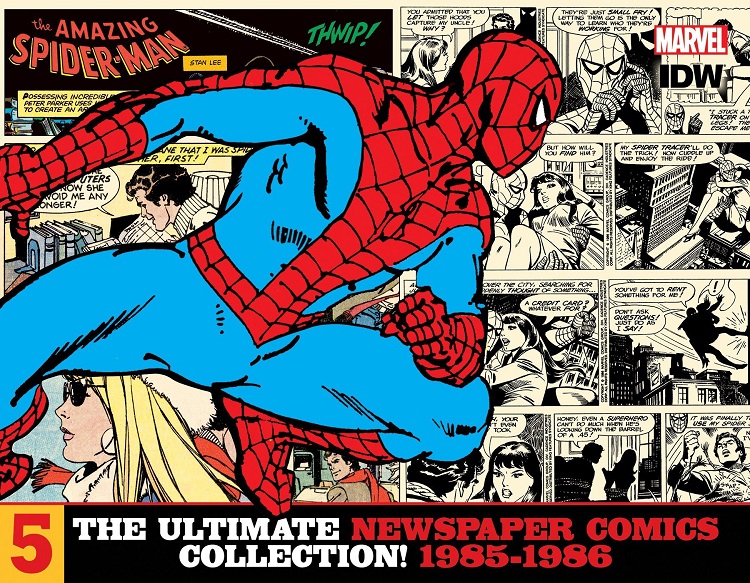
In its early years, the daily Spider-Man comic strip had typically followed a comfortable pattern of Spider-Man facing off against one classic supervillain after another, similar to his monthly comic book adventures. By the mid-‘80s, Stan Lee switched up his writing formula to inject a heavy dose of realism into the strip, with not one super-powered baddie appearing in the strip. His stories also played out over months rather than weeks, with only four primary story arcs appearing in the two years presented in this collection. Even more amazing, the most sensitive story subject of all got the longest runtime of them all rather than being relegated to a quickie public-service announcement.
For the first few months of 1985, the strip followed Spider-Man’s efforts to stop a terrorist group called Dar Harat from carrying out acts that would trigger World War III, years before terrorism would actually become the primary threat to U.S. security. The strips seem incredibly timely even now, especially considering that they were crafted during the waning days of the Cold War when our biggest fear was Soviets, not terrorists.
After saving the day from international terrorists, Spider-Man moved on to a sensitive domestic issue: child molestation. Stretching out over the rest of 1985, a stunning eight-month run, Spidey slowly uncovered the mystery of why a little girl was always terrified to see him in costume, as well as tracking down her abuser and bringing him to justice. The run is even more notable for Lee’s bombshell revelation that Spidey was also a victim of molestation, adding even more weight to an already emotional arc. While the storyline isn’t exactly the stuff daily readers would have found palatable with their morning Wheaties, Lee handles the delicate subject with finesse, avoiding sensationalism to develop a worthy mystery with a gut punch of a payoff. Spidey’s spotlight on child abuse initially occurred in a one-shot comic book that was widely distributed for free as an educational aid, but it’s this subsequent daily strip that really drove home the horrors of the issue.
At the start of 1986, Lee moved on from child abuse to elder abuse, calling in Spidey’s Aunt May to serve as a victim of an elaborate plan to rob seniors of their life savings via a human-like robot infiltrating banks. Concurrently, Spidey finally reveals his secret identity to on-again/off-again flame Mary Jane Watson in an effort to come clean before he proposes to her, but his gallant act backfires when she refuses him because she doesn’t want to risk having children with mutations. Spidey spends the rest of the year defending himself from false claims that he’s a drug pusher, spinning his wheels to find the true culprit behind the scheme to besmirch his reputation.
Looking at the recap, it’s shocking that two years of a daily comic strip consisted of terrorism, child abuse, elder abuse, and drugs, with only a failed engagement proposal to lighten the mood. It’s not exactly a friendly neighborhood Spider-Man, but Lee’s gritty realism gives these strips some added dimension that make them the strongest to date, eliminating cheesy celebrity cameos and throwaway baddies to deliver material with some actual substance, seemingly exposing the seedy underbelly of Reagan-era prosperity and paving the way for the darker tales that rose to lasting prominence in monthly comic books beginning in 1986 such as Watchmen and The Dark Knight Returns.
IDW Publishing’s collection presents three daily black and white strips per page alternated with full-color Sunday strips printed one per page on heavy acid-free paper in a handsome hardcover. Although much of the daily art run for this collection went uncredited, the work by credited Sunday artist Floro Dery and temporary daily artist Dan Barry blends well enough with the nameless contributions from the Marvel bullpen, with Dery’s lovely unconventional linework the clear artistic high point. The strips look crisp and clean throughout the book, seemingly sourced from the best possible origins (including King Features Syndicate proofs and private collections) and restored to perfection. There’s simply no better way to experience and collect these strips, and IDW’s Library of American Comics imprint is to be commended for their continuing dedication to preserving and promoting this fantastic American art form.